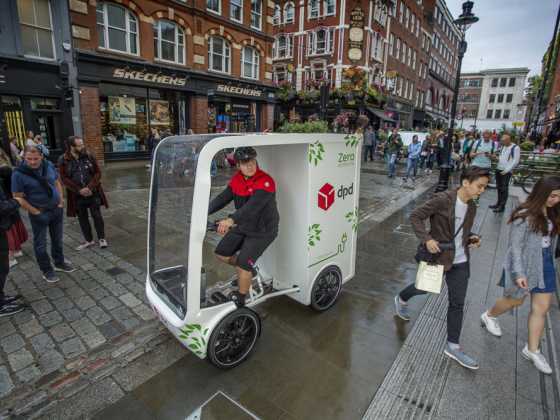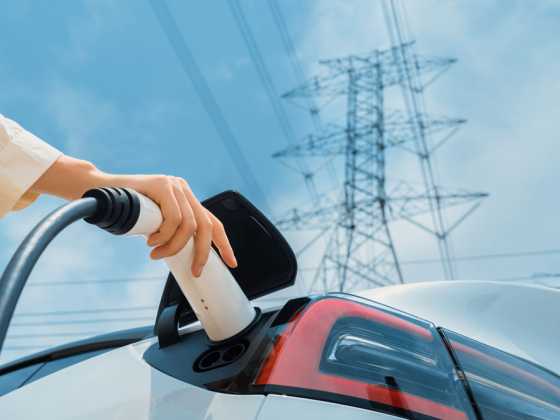Next generation electric vehicles
Yannick Read of the Environmental Transport Association looks toward the future of Electric Vehicles and ‘decarbonising’ fleet transport
 Electric cars have the potential to play a significant role within a sustainable transport system, but it is difficult to disentangle media hype from the stark reality of ‘decarbonising’ transport.
Electric cars have the potential to play a significant role within a sustainable transport system, but it is difficult to disentangle media hype from the stark reality of ‘decarbonising’ transport.
The purchase price of electric cars remains a barrier to ownership for the majority of motorists. There is potential for improvement in performance and reduction of costs in the medium term, but not enough to suggest electric cars could compete head on with conventionally-powered cars in the immediate future. Low running costs of electric vehicles would lead to extra demand for car transport and make the taxation of electricity necessary.
Carbon talk
At the moment producing electricity from coal costs around 3p a kilowatt per hour (3p/kW/h). This is cheaper than burning natural gas or oil and that is why most power stations still use coal to generate electricity.
Renewables cannot produce electricity this cheaply as electricity from wind turbines costs 4p/kW/h and the latest solar technology also costs 4p/kW/h.
However, once a ‘Carbon Tax Commission’ sets its rate for a carbon tax, the cost of producing electricity from coal fired power stations would cost more than renewables.
A bag full of innovation
Oxford University predicts that the number of cars on the world’s roads in twenty years will double to two billion, but that electric vehicles will account for only a small percentage of the overall fleet in the medium to long-term. This does not appear to have dampened the enthusiasm of the car manufacturers, such as Daimler, Ford, General Motors, Honda, Hyundai, Kia, Renault-Nissan and Toyota.
These electric vehicles in the pipeline include all manner of innovation. For example, incorporating solar panels into the roof can add up to 20 miles per day to a cars’ range.
Bio-plastic body panels used in various electric concept cars are lighter than steel and are derived from renewable sources such as vegetable oil, corn starch or seaweed as opposed to conventional plastics which are made from petroleum. Petroleum-based foam can be swapped in favour of a soybean-derived alternative and seat covers can be made from hemp-based fabrics.
Cars of the future may also draw heavily on mobile phone technology for everything from entertainment to crash-avoidance software. The iChange electric concept car features a body that adapts to the number of passengers on board and has adjustable seats and car ignition all controlled via an iPhone.
Further enhancements
Current electric cars can take as long as eight hours to recharge, but future models may use battery exchange. Each car would have a satnav able to pinpoint the nearest garage with a fully-charged battery, which could then be quickly exchanged for the depleted one.
Alternatively, fuel cell cars use hydrogen to power electric motors, doing away with the need to charge batteries. These vehicles can travel longer distances than electric vehicles that need to be re-charged directly from a mains supply. A DIY hydrogen generator, no bigger than a fridge and due to go on sale within two years, will allow householders to produce their own power for an electric car.
Although no one has yet been killed by a car because it was too quiet, there is concern that near-silent electric cars pose a threat to pedestrians. Enhanced Vehicle Acoustics is an American company which has received start-up funding from the National Federation of the Blind in order to develop ‘car tones’ – artificially-created sounds for otherwise silent electric cars. There is no reason why this feature should sound like an internal combustion engine either. Operatic car, anyone?
The interiors of future electric cars may also be radically different form the cars we drive today; with wheel-mounted motors there is no need to accommodate an internal combustion engine or transmission within the car. Interiors will be roomier as a result leaving more room for seating and the latest technology. Touch screen technology may soon seem old hat – the most recent car interiors experiment with controls that sense when your fingers get close to them.
So the potential of electric cars is mind boggling – as long as the price is right.
The Environmental Transport Association (ETA) provides car breakdown and insurance services. Profits help to support campaigning for sustainable transport.
For more information
Web: www.eta.co.uk
Tel: 0800 212 810






